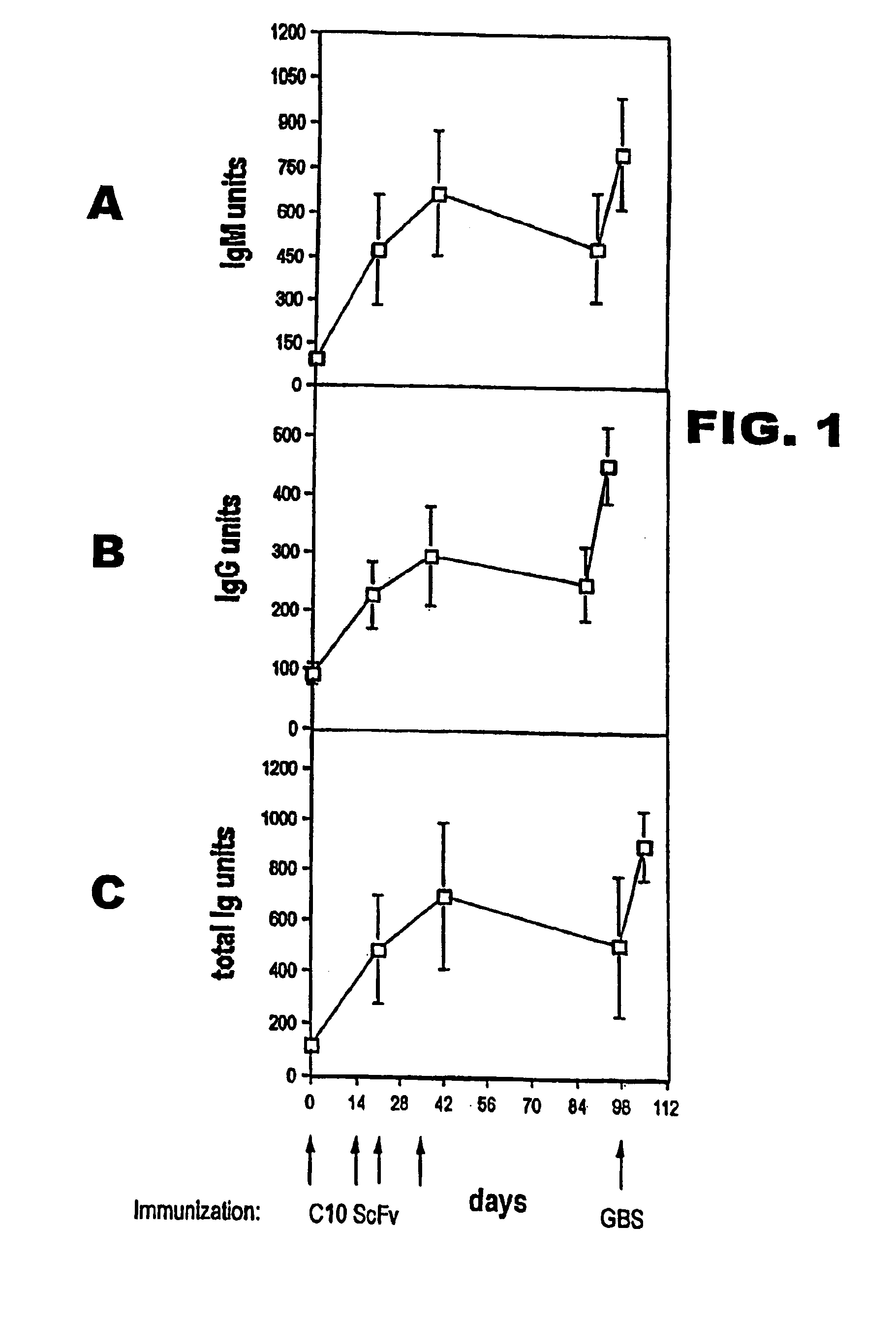Vaccine formulations comprising antiidiotypic antibodies which immunologically mimic group B streptococcal carbohydrates
a technology of streptococcal carbohydrates and vaccine formulations, which is applied in the direction of fused cells, drug compositions, immunological disorders, etc., can solve the problems of poor immunogenicity, high incidence of mortality and permanent disability, and ineffective in conferring long-lasting protective immunity
- Summary
- Abstract
- Description
- Claims
- Application Information
AI Technical Summary
Benefits of technology
Problems solved by technology
Method used
Image
Examples
examples
[0120]Differences between antibody concentrations in mouse sera were analysed for statistical significance using one way analysis of variance and the Student-Keuls-Newman test. Differences in lethality were analysed with Fisher's exact test.
Bacterial Strains and Reagents.
[0121]Strain H738 (type III), was kindly provided by Dr. Bascom Anthony, National Institutes of Health, Bethesda, Md. Strain COH1 (also GBS type III) and the unencapsulated isogenic mutant COH1-13 were a gift of Dr. Craig Rubens, University of Washington, Seattle (Rubens et al., 1987). Type III and group-specific CHOs were purified by ion-exchange chromatography and gel filtration from the culture supernatant of strain H738, as described previously (Mancuso et al., 1994; von Hunolstein et al., 1997). The type III CHO contained 24% sialic acid by weight (Aminoff, 1961). This preparation was considered of sufficient purity because it contained, on a weight basis, <0.5% proteins (BIORAD protein ass...
PUM
| Property | Measurement | Unit |
|---|---|---|
| size | aaaaa | aaaaa |
| pH | aaaaa | aaaaa |
| molecular weight | aaaaa | aaaaa |
Abstract
Description
Claims
Application Information
 Login to View More
Login to View More - R&D
- Intellectual Property
- Life Sciences
- Materials
- Tech Scout
- Unparalleled Data Quality
- Higher Quality Content
- 60% Fewer Hallucinations
Browse by: Latest US Patents, China's latest patents, Technical Efficacy Thesaurus, Application Domain, Technology Topic, Popular Technical Reports.
© 2025 PatSnap. All rights reserved.Legal|Privacy policy|Modern Slavery Act Transparency Statement|Sitemap|About US| Contact US: help@patsnap.com


